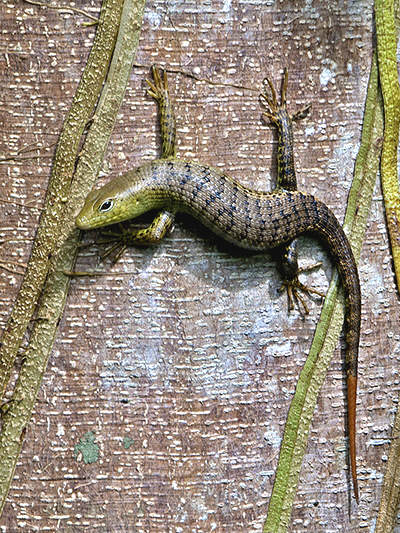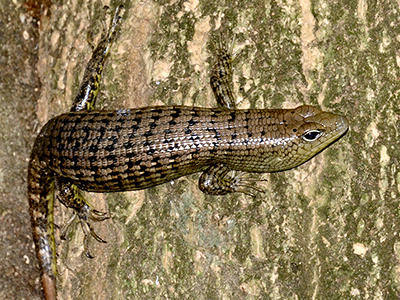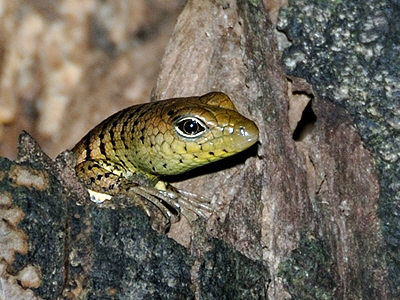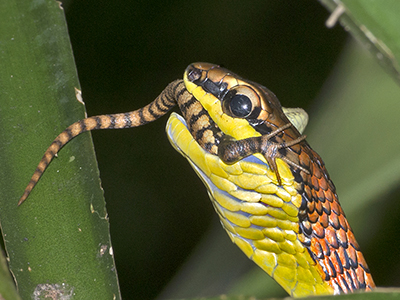
Fig 1

Fig 2

Fig 3

Fig 4

Fig 5
|
Family : SCINCIDAE
Species : Dasia grisea
Size (snout to vent) : 13 cm
Size (total length) : 28 cm
The Brown Tree Skink is a
shy, diurnal lizard of lowland primary and secondary forest. It is characterised by a
greenish-yellow underside and a series of dark bands across the medium-brown
dorsum.
In juveniles the
patterning comprises a series of dark spots on the head, yellow and brown
bands across the dorsum, and a mainly yellow-orange tail with brown bands.
Members of the genus Dasia, which are strongly arboreal, have a similar
body size to skinks of the largely terrestrial Eutropis genus,
such as the Many-lined Sun Skink
Eutropis multifasciata.
Individuals of this species may inhabit the same tree hole or crevice for
many months, or even years. They will often bask in the sun at the entrance
to their preferred hiding space, but will quickly retreat inside if
disturbed.
This species is preyed upon by arboreal snakes, including
Kopstein's Bronzeback
Dendrelaphis kopsteini (see Figure 5, below).
This species ranges from Peninsular Malaysia to Borneo, Sumatra and the
Philippines. In 1994 the species was found for the first time in Singapore,
and has since been confirmed as widespread but uncommon in the country's central
forests.
Fig 1 : Example from Thomson Nature Park,
Singapore, seen on the trunk of a huge fig whilst warming itself in the
morning sun.
Fig 2 : Another example catches the last rays of the afternoon
sun.
Fig 3 : Another specimen peering out from a hiding hole in a rotten tree.
Fig 4 : This specimen prefers to hide in a crevice in a rotten tree stump.
Fig 5 : Juvenile with banded tail being preyed upon by a
Kopstein's Bronzeback
Dendrelaphis kopsteini in secondary forest, Singapore.
All photos taken in Singapore.
References :
Grismer, L. L. (2011). Lizards of Peninsular Malaysia, Singapore, and their
Adjacent Archipelagos. Their Description, Distribution, and Natural History.
Edition Chimaira, Frankfurt am Main. 728 pp.
|